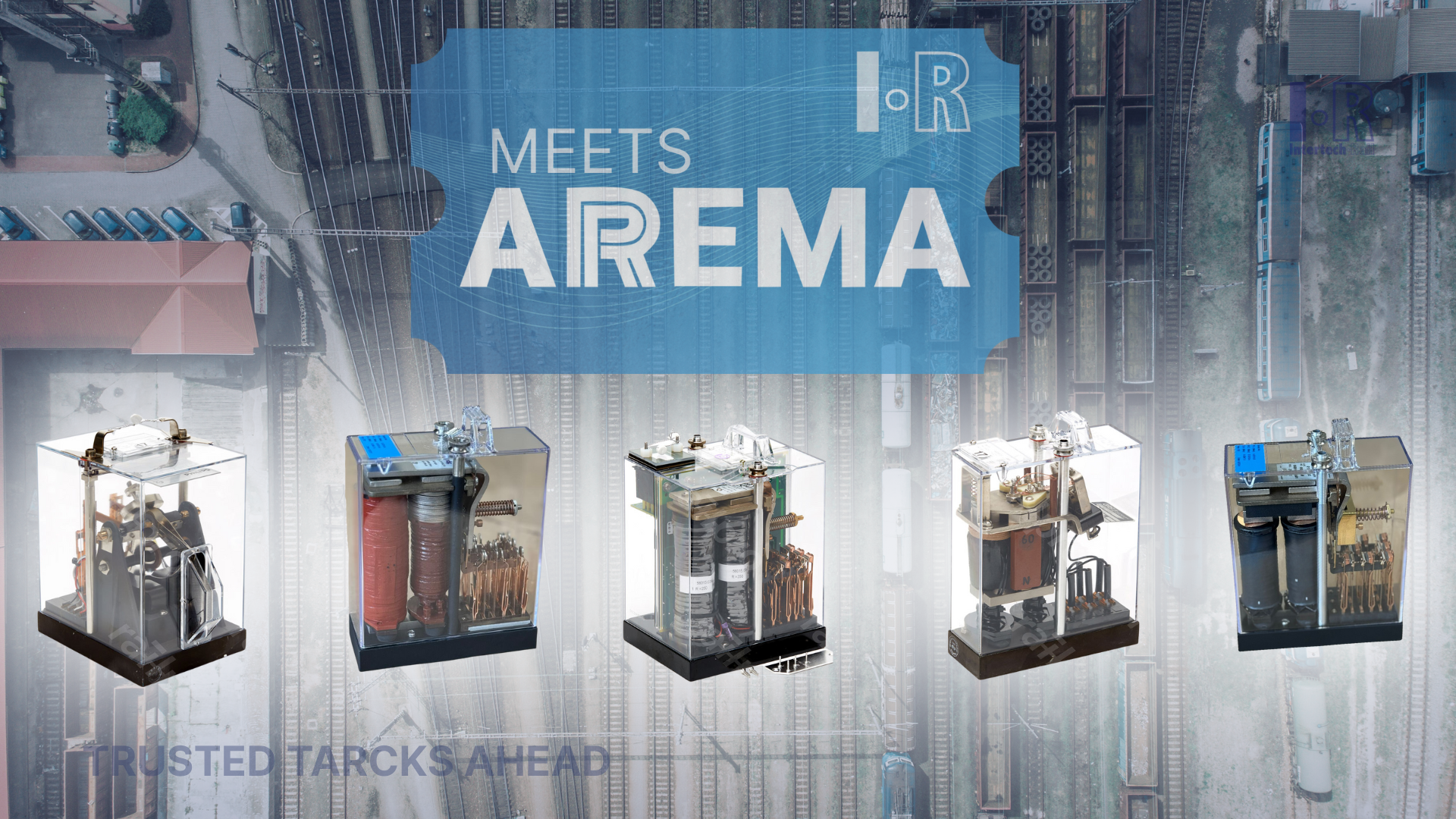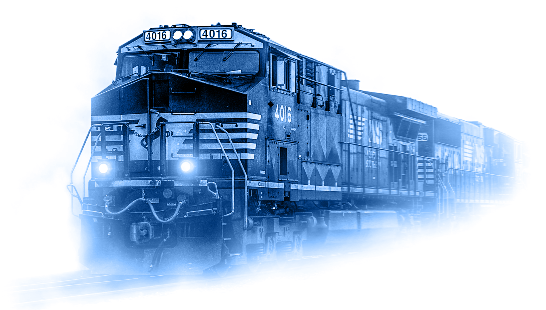Entre em Contato
555-555-5555mymail@mailservice.com
A Retrospective on the Evolution of Railway AEI Technologies: From the 1980s to 2024
A Retrospective on the Evolution of Railway AEI Technologies: From the 1980s to 2024

Automatic Equipment Identification (AEI) is a vital development for the railway sector, enabling the automated identification and monitoring of assets such as railcars and locomotives.
This technology optimizes resources, lowers costs, and improves operational accuracy and efficiency.
The Pre-Digital Era and Manual Identification at the Inception of AEI
The railway sector used manual processes like spreadsheets and paper records before automation. These techniques lacked scalability, were slow, and were prone to human error. Automation was unavoidable due to the need for more effective solutions, which signaled the start of the industry's technological transformation.
The First Automated Solutions: Barcode
Automation began with the advent of barcodes in the 1970s. Although the technology improved precision and dependability, it had operational drawbacks, such as the requirement for optical readers that were properly calibrated, which limited its use in challenging railroad settings.
In 1967, the colorful barcode system known as KarTrak, or KarTrak ACI (Automatic Car Identification), was deployed in North America to track railcars automatically. Although initially adopted, it was abandoned by 1977 due to technical problems such as dirt buildup on labels, inadequate maintenance, and low reliability. The system's failure brought to light the difficulties the railroad industry had in implementing computerized tracking, which caused more developments to be postponed until the 1980s.
AEI's RFID Wave
By enabling contactless, in-motion reading, Radio Frequency Identification (RFID) transformed AEI in the 1980s. With readers placed in strategic locations and transponders mounted on railcars, the system guaranteed increased effectiveness, longevity, and minimal maintenance expenses. RFID is included into Intertechrail's state-of-the-art solutions, which include personalized tracking and monitoring systems that adhere to international standards set by the Association of American Railroads (AAR).
Technological Developments: Cloud-Based Solutions and IoT
With the incorporation of cloud-based platforms and the Internet of Things (IoT) starting in 2010, AEI changed. Real-time monitoring, maintenance predictions, and the use of big data to optimize operations are made possible by solutions such as those offered by Intertechrail. These technologies improve the industry's level of efficiency by tracking location as well as load and railcar characteristics.
Expanded AEI and Intelligent Tracking Systems in the Modern Era
Nowadays, AEI incorporates sensors that detect pressure, temperature, and weight in real time, going beyond simple identification. Operations are safer and more transparent when advanced automation is paired with blockchain technology for secure data capture. Intertechrail systems are a prime example of this development, introducing innovation and dependability to rail transportation worldwide.
Impact on the Railway Sector
By cutting expenses, improving logistical effectiveness, and avoiding operating disruptions, AEI has revolutionized the railway industry. Technologies that minimize maintenance and operational failures have also improved safety, while resource and route optimization has lessened the environmental impact of the sector.
AEI's Future in the Railway Industry
With compatible technologies linking international railway networks, AEI is heading toward complete automation. In addition to predicting failures, artificial intelligence also claims to foresee market trends and requests. Leading this development are businesses such as Intertechrail, who are creating solutions that will influence the railway industry's future.
By transforming the railway sector from its primitive practices to the sophisticated technologies of today, AEI has raised the bar for sustainability, efficiency, and safety.
A Trusted Partner in Railway Progress
Intertechrail has been actively involved in the technological advancement of the railway industry for more than 20 years. One of our main fields of expertise is creating and implementing AEI solutions, which are always in line with the requirements of a market that is continually changing. Our dedication throughout the years has been to deliver systems that not only meet but also surpass the demands of contemporary rail transportation, helping to create a more connected, safe, and effective future.
Ready to take the next step in railway innovation?
Contact out team today to learn how our AEI solutions can drive your operations forward and help shape the future of rail transportation.

April 13, 2025
Tags are essential parts of the railway sector that improve operations, increase safety, and simplify asset management. These little gadgets are essential for regulating signals, automating procedures, and supplying real-time data. This article examines the fundamental ideas of tags, their varieties, and cutting-edge Transcore-powered solutions. The Importance of Tags in Railway Systems Railway tags are small electronic devices used for data storage and transmission that are fastened to trains, signals, or other infrastructure. To manage schedules, keep an eye on train movements, and maximize safety, their main job is to connect with automated systems like Automatic Train Control (ATC). Additionally, tags improve overall efficiency and safety by tracking assets like railcars and providing real-time data for maintenance. Thanks to developments in tag technology, numerous kinds of tags that are appropriate for diverse situations and demands have been created. With the help of Transcore, some of these tags provide customized solutions for challenging situations. Let's examine the many kinds of tags and how they are used in the railroad sector. What is a Tag? A railway tag is a tool used to transmit data to a reader or control system. There are several uses for these tags, including: Identifying assets (railcars, infrastructure) Managing train movements Enhancing safety features (e.g., speed limits) Automating train control and scheduling To keep the railway network running smoothly, the tag's data is usually read by a sensor or reader as the train passes. Types of Railway Tags In the railway sector, various kinds of tags are made to meet particular requirements, such as asset tracking, signaling, and automated system communication. Let's examine the main categories of railroad tags. 1. Half Frame and Full Frame Tags These terms describe the tags' dimensions and ability to store data. In the railway industry, they are frequently employed for asset identification. Half Frame Tags: Perfect for straightforward tracking and identification in spaces with limited space or when less data is required, half frame tags are smaller in size and have a smaller data store capacity. Full Frame Tags: More substantial, larger, and capable of storing more info. These tags may interact with automated systems to send additional information and are utilized for more complicated applications, such as thorough asset management. For asset tracking, both kinds are necessary, but full-frame tags are more adaptable because of their larger data capacity. 2. Signal Tags Signal tags are essential for contact with the railway's signaling system. When a train passes, they communicate with crossing gates, trackside signals, and other infrastructure to send critical information. Functions of Signal Tags include: Triggering signal changes (e.g., stop, go) Updating train schedules Sending alerts to the control center in case of issues By automating reactions to real-time events, signal tags increase railway operations' safety and effectiveness. They can even affect train speed and routing when combined with Automatic Train Control (ATC) systems, making train movements safer and more effective. 3. Tags for Harsh Environments TransCore is a pioneer in creating cutting-edge tag solutions for the railroad industry. Their solutions are made to function dependably in demanding settings, guaranteeing that railroad operations continue to be secure and effective even in the most severe circumstances. Harsh Environment Balise: A reliable trackside beacon that is incorporated into signaling networks. Balizes interact with trains to initiate particular operations, such as modifying the speed or updating the schedule. To ensure dependable communication in challenging circumstances, these tags are designed to resist high temperatures, intense rain, snow, dust, and vibrations from passing trains. Harsh Environment Tag: Similar to the balise, this tag is utilized for safety-critical applications, asset tracking, and train equipment monitoring. These tags are perfect for industrial regions or places subjected to extreme conditions because they are long-lasting, provide long-range data transmission, and are corrosion-resistant. High-Temperature Tag: Designed to function in hot conditions, such as those found next to power plants or in hot industrial areas. Because these tags can tolerate higher temperatures than regular tags, asset management and safety systems will continue to operate even in extremely hot or cold environments. The Importance of Tags for Railway Operations Tags are crucial to the operation of modern railway systems. Here are a few reasons why they are so important: Automation: By automating tasks like asset management, movement control, and rail signaling, tags help to lower human error and boost operational effectiveness. Safety: By enabling instantaneous communication between trains and trackside systems, tags guarantee that vital safety information is conveyed promptly. This is particularly crucial in places with heavy traffic or difficult circumstances Efficiency: Railway operators can improve overall efficiency by optimizing timetables, maintenance, and resources using real-time data gathered from tags. Furthermore, tags enable predictive maintenance by spotting possible problems before they become serious ones. Asset Management: By keeping railcars, locomotives, and other pieces of equipment well-maintained and reducing downtime, tags aid in asset management. They are essential for raising efficiency and lowering maintenance expenses. The Future of Railway Tags Railway tags, particularly in automated systems, have improved safety, efficiency, and dependability, revolutionizing train administration. Advanced tags from Transcore, such as Signal Tags, Harsh Environment Balises, and High-Temperature Tags, offer strong, long-lasting solutions for contemporary train operations. These technologies will become even more important as the sector develops, enabling safer, more efficient operations under challenging circumstances. Leading the way in innovation, Transcore will influence the development of more automated and dependable rail networks for both passengers and cargo in the future.

April 8, 2025
This article explores the importance of AREMA (American Railway Engineering and Maintenance-of-Way Association) standards in the global railway industry. It explains how these guidelines enhance safety, interoperability, durability, and compliance with legal requirements. The piece also highlights the role of AREMA standards in railway relays, showcasing IntertechRail’s range of high-quality, AREMA-compliant relays that contribute to safer and more efficient railway operations worldwide.
Contact Us




1501 Venera ave Suite 320A Coral Gables, FL 33146
+55 11 985974011 (Brazil)
+1 614 302 1900 (USA)
Intertech Rail 2024 - All Rights Reserved





